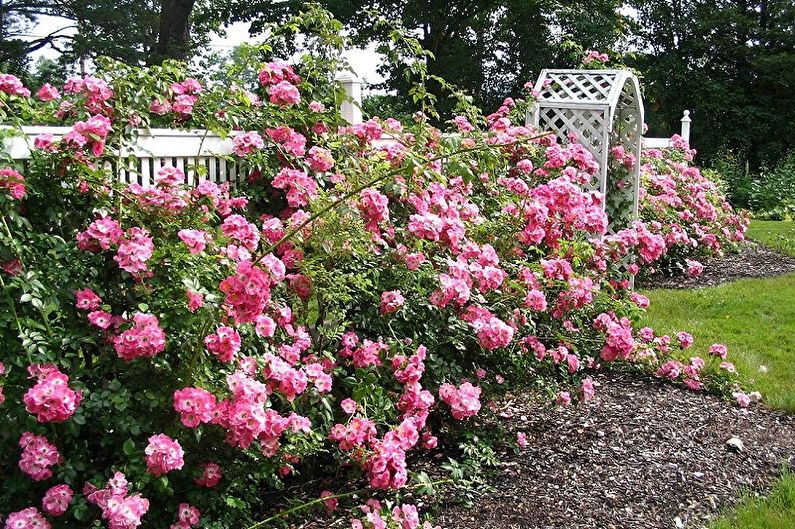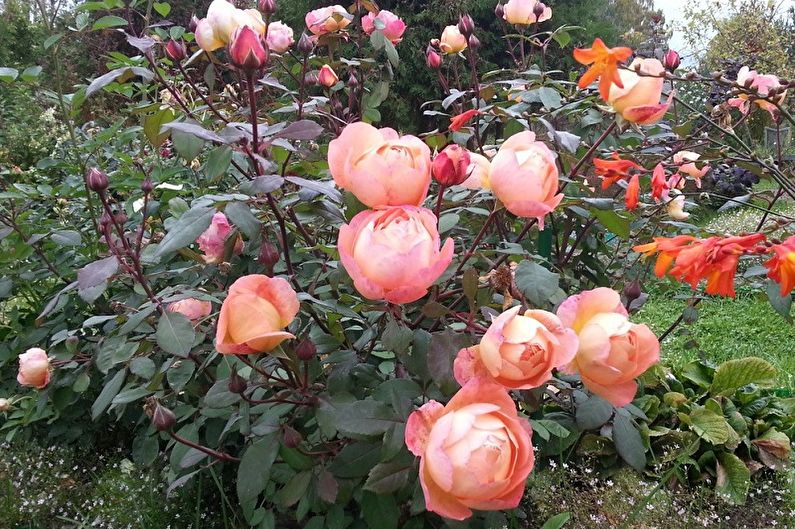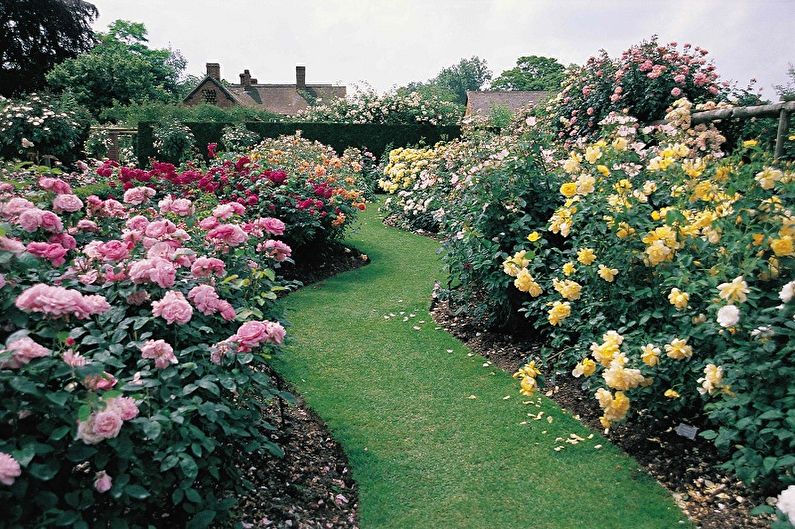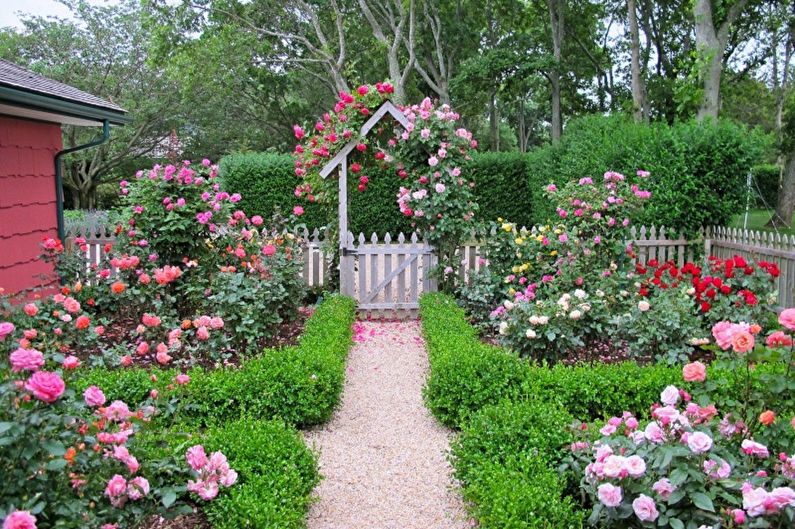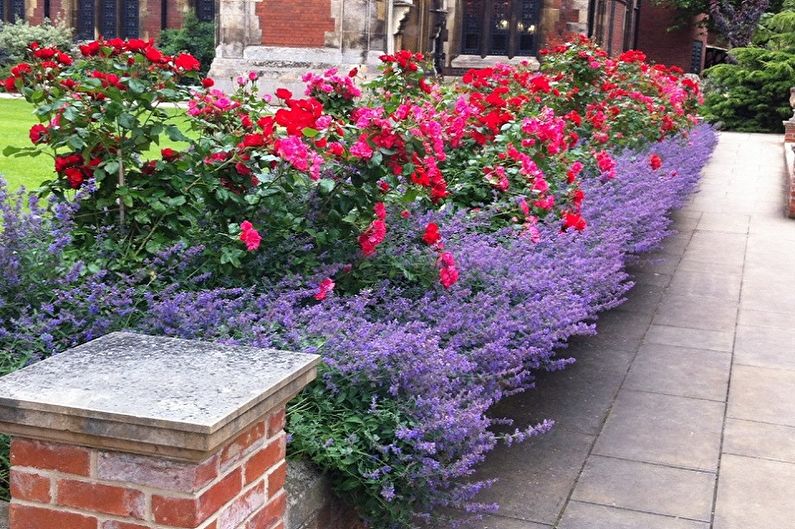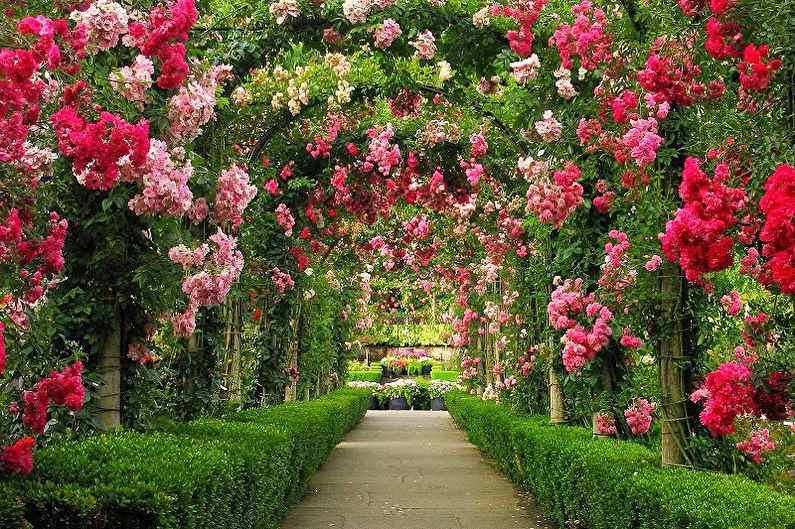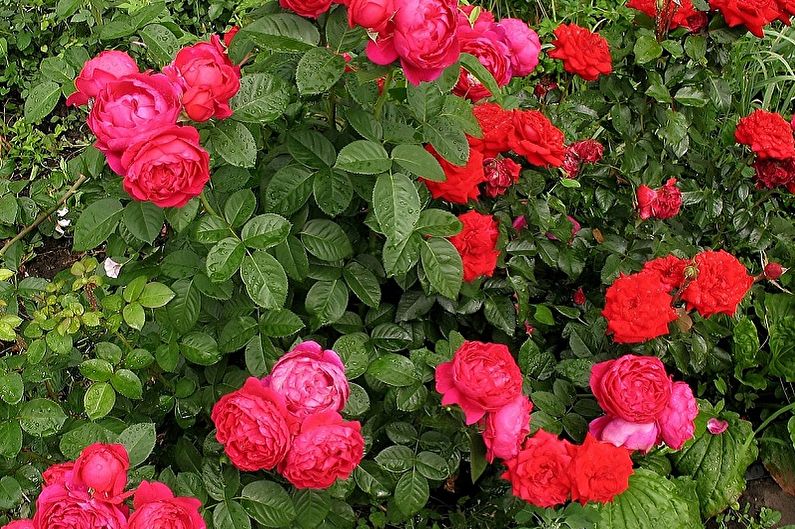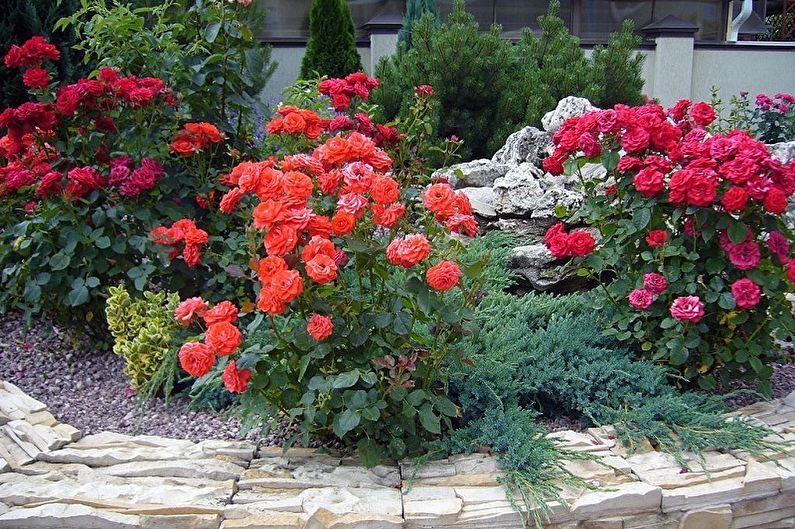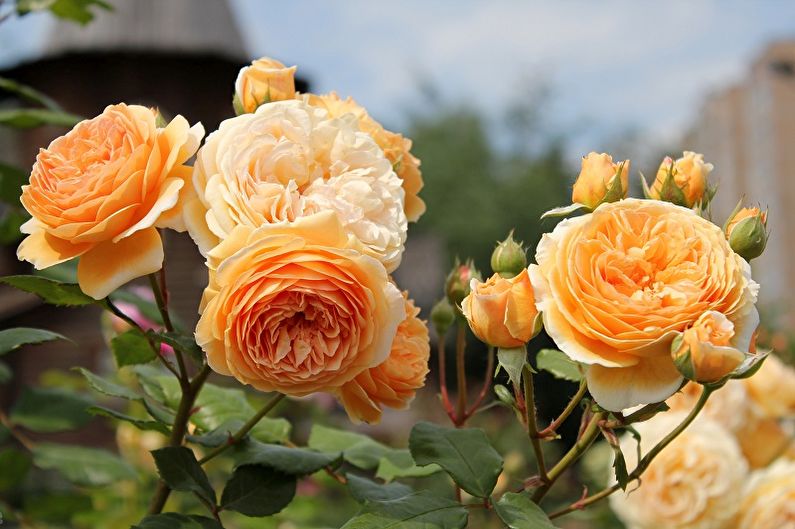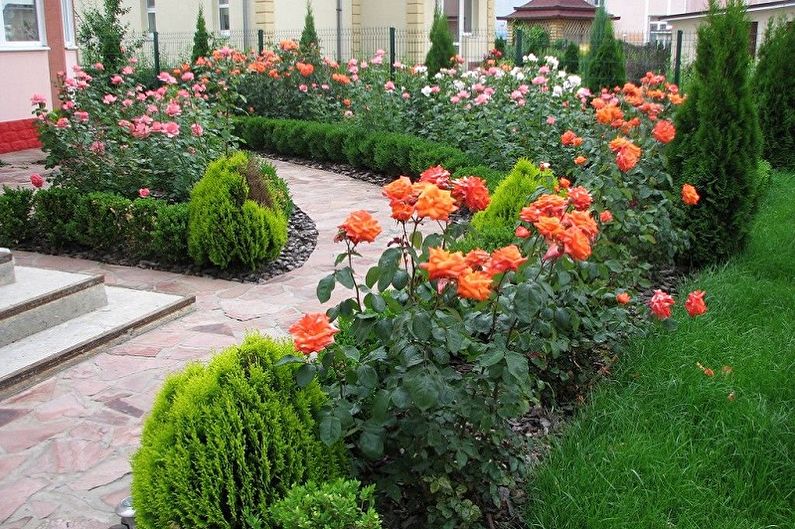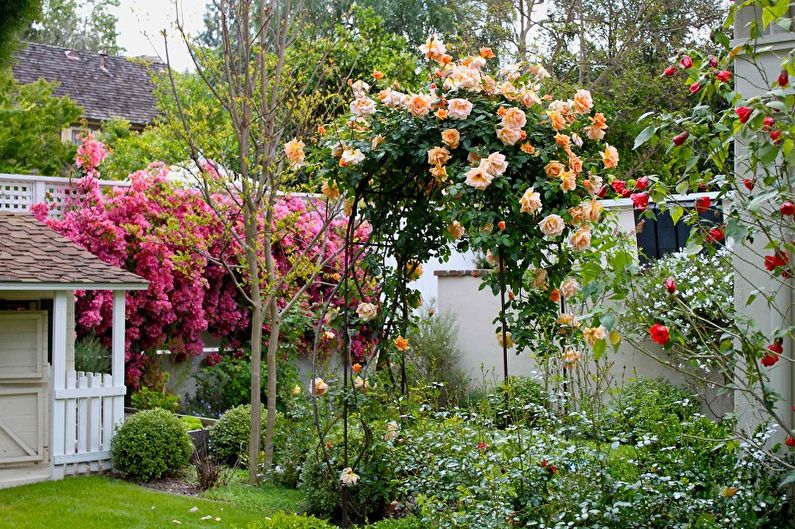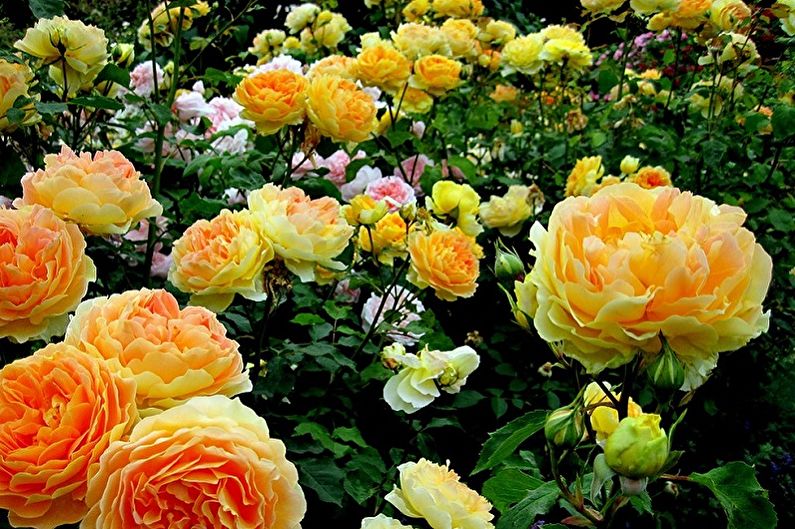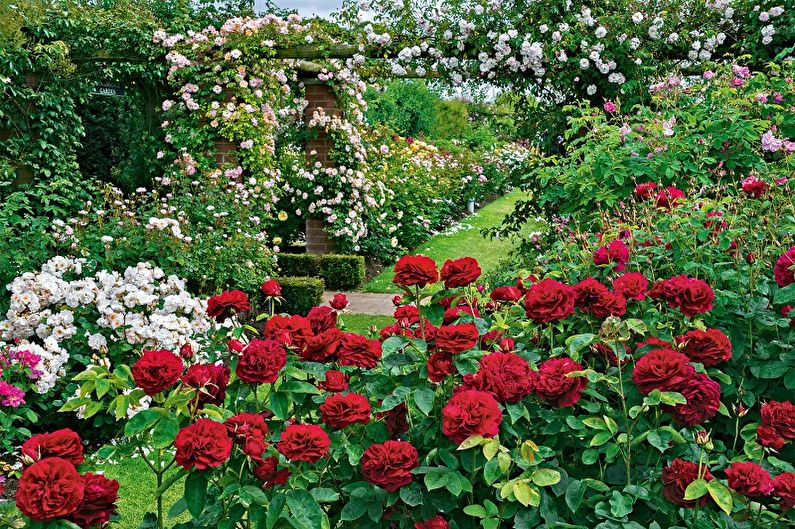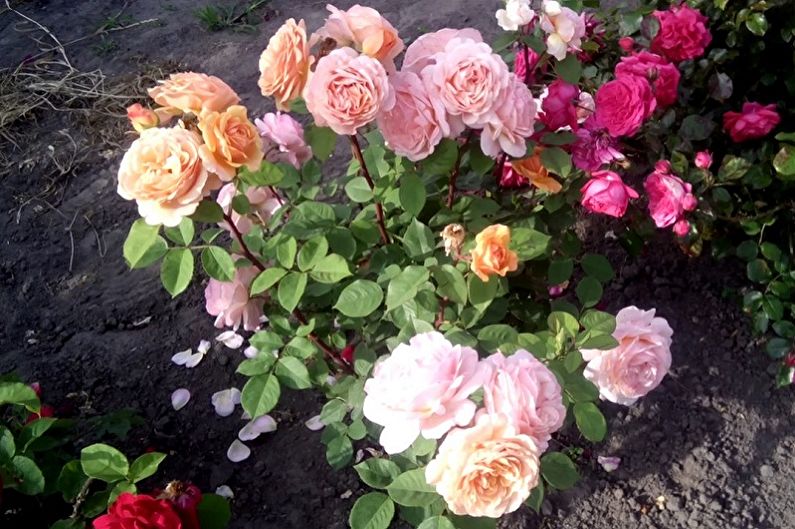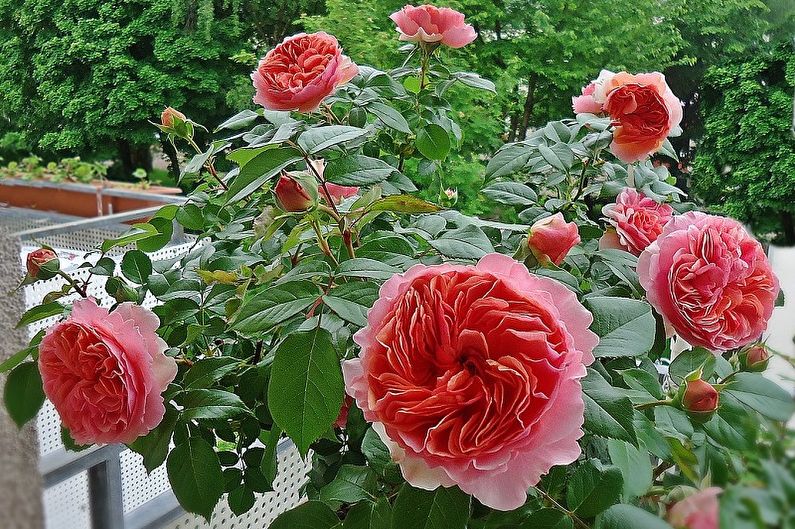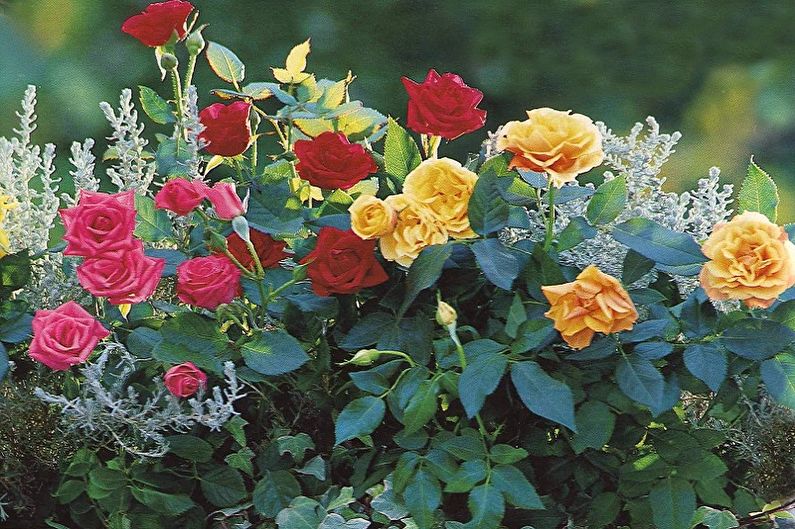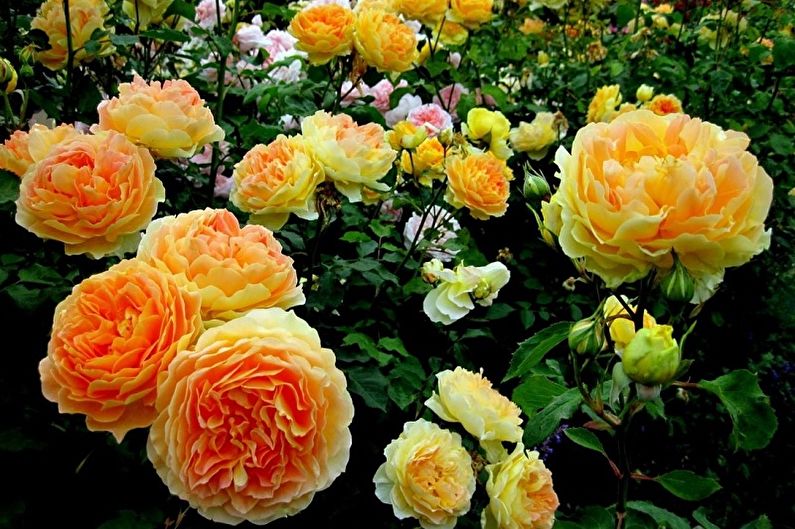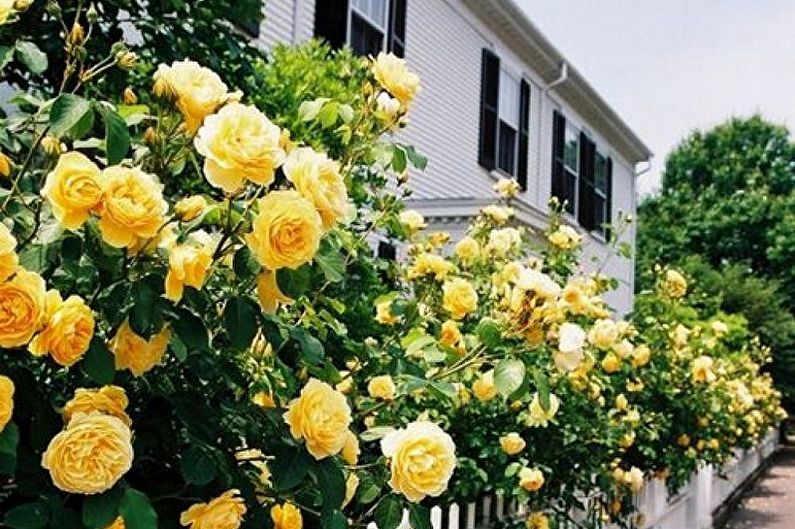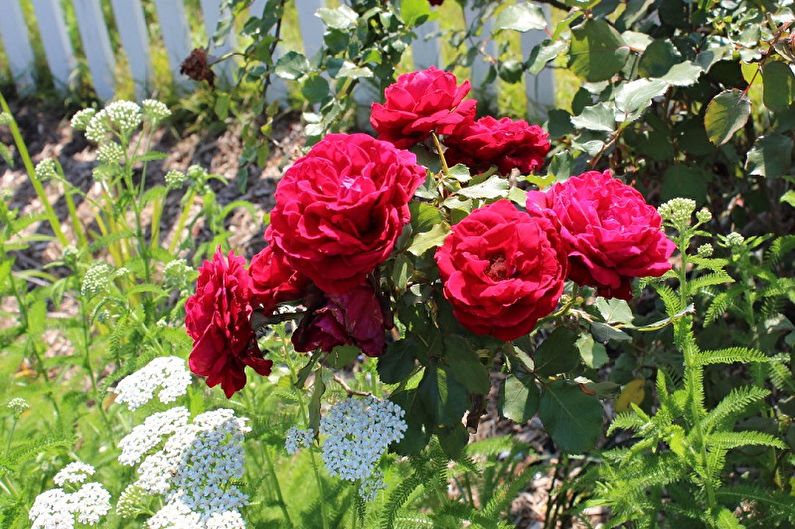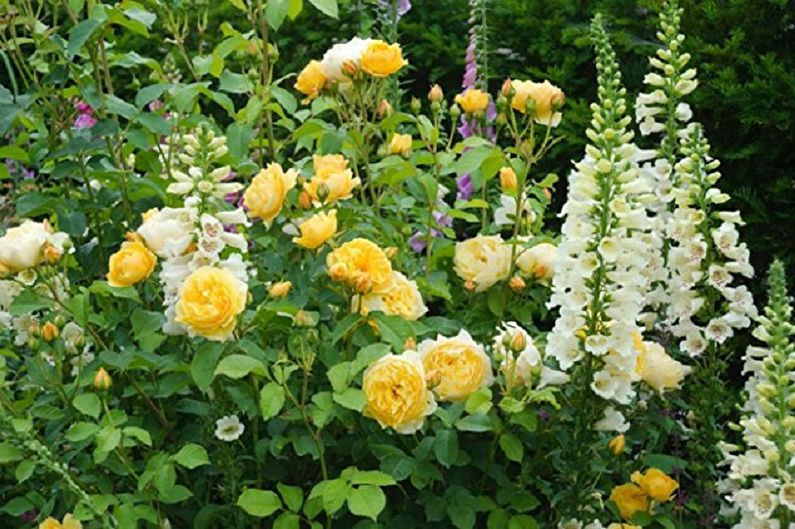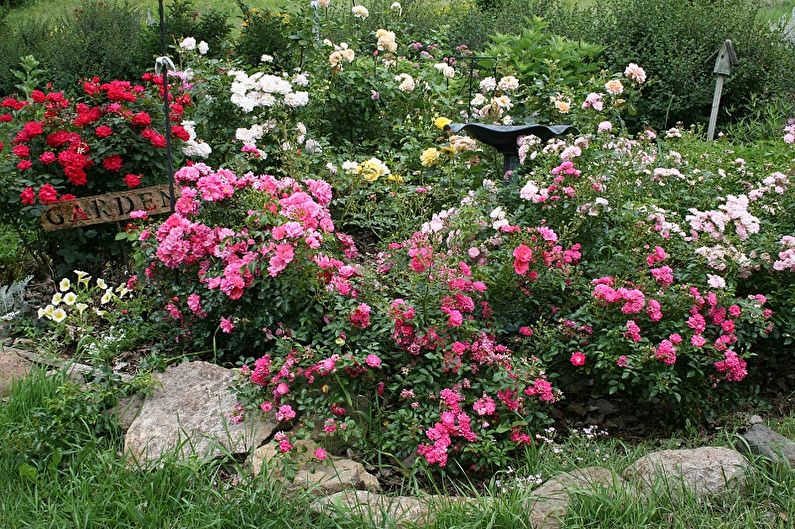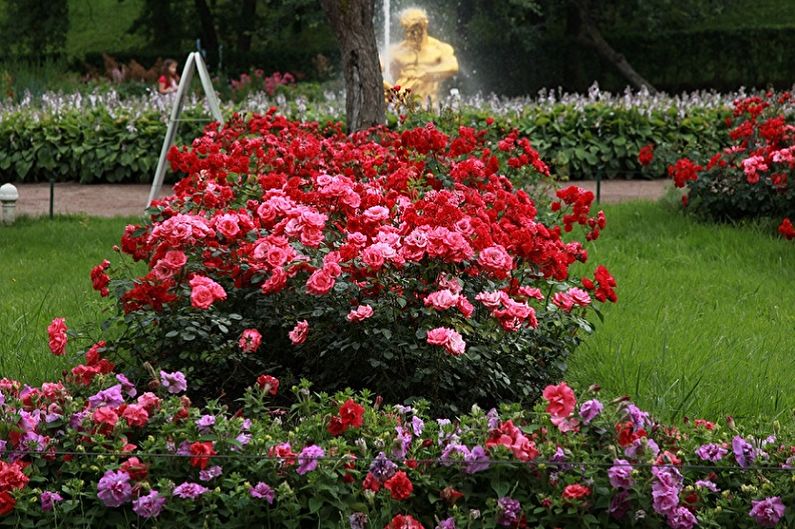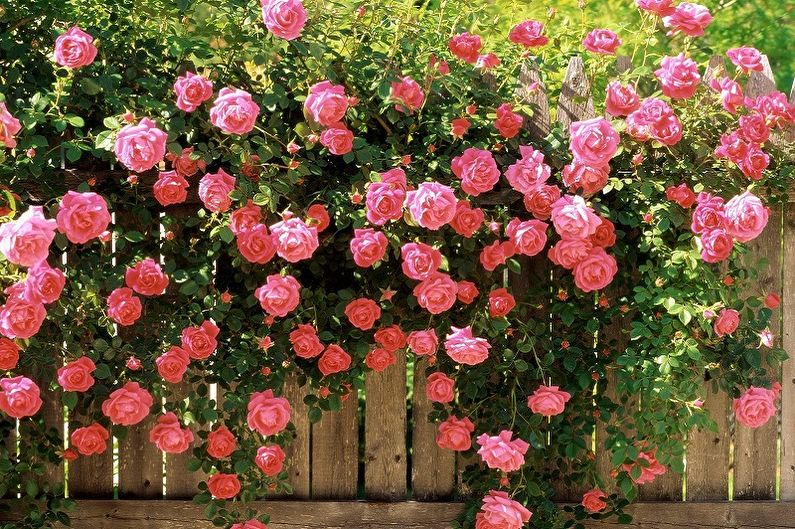
The English rose is deservedly recognized as the most beautiful group of plants of its kind, deserving special attention. This is the product of the hard work of a breeder from England, David Austin. He succeeded in the most successful way of crossing varieties of ancient roses with subspecies of modern hybrid tea, thanks to which a beautiful English rose was born. This group is characterized by a high level of resistance to adverse climatic conditions and diseases and, of course, the incomparable aroma of lush flowering with notes of fruit mixes, musk and tea.
Types and varieties of English roses
To date, quite a few varieties of English roses have been bred, each of which has its own characteristics and deserves special attention. They can differ in the size of the bushes, the flowering palette, the shape of the buds, but they combine their excellent aesthetic qualities. Consider a few more interesting and popular varieties.
William Shakespeare
The flower was introduced by the breeder at the end of the 80s of the last century, and at the turn of the century a new “improved” variety of William Shakespeare appeared in front of gardeners - 2000. The novelty aroused considerable interest with its stunning decorative characteristics: large, densely-colored flowers of a red-velvety color, which time acquires a purple hue, as well as the splendor of a branched bush, clad in bright green large foliage.
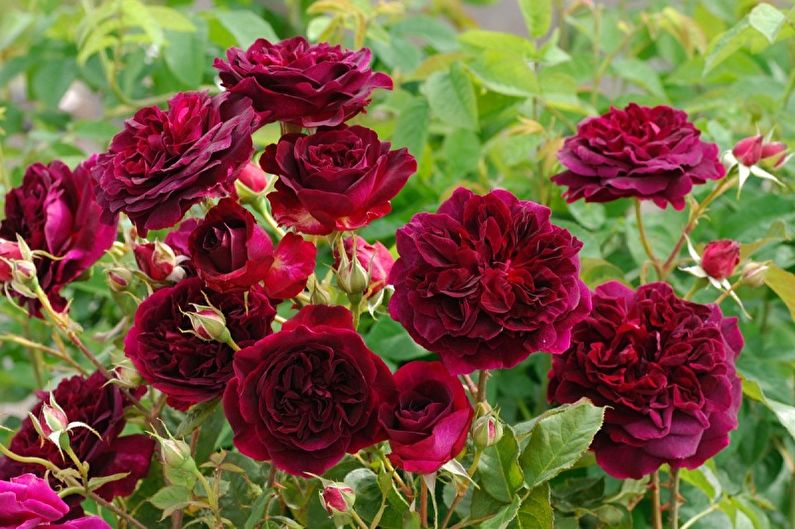
Benjamin Britten
This selection result was released at the beginning of this century, it is characterized by a particularly powerful structure of the skeleton of the bush and its increased branching. This type of English rose in adulthood reaches a meter mark, and the buds boast an original scarlet color, but with a pronounced orange tint. They look great against the background of green foliage and in the vicinity of plants that have white color. Fruit aroma of flowering contains notes of wine and pear flavor. It is worth noting that the culture is very unpretentious in care, resistant to disease.
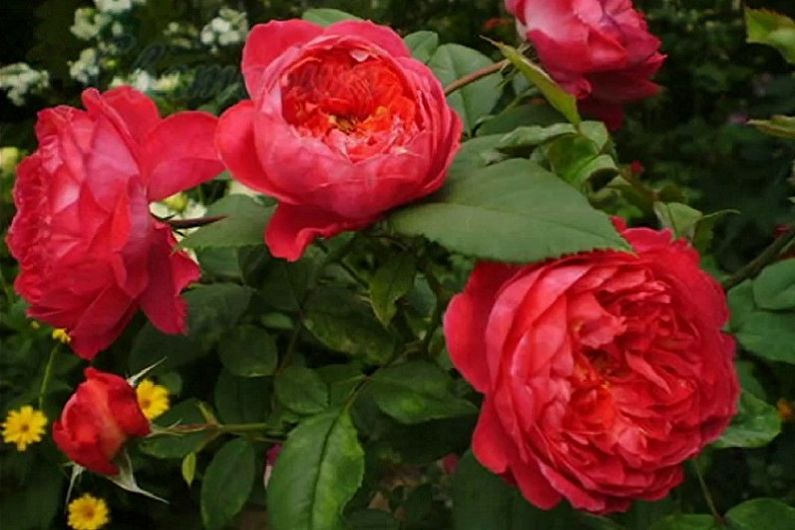
Abraham Derby
The variety belongs to the class of scrubs, has an amazing fresh fruit aroma, quite distinct and persistent. The flower was bred in 1985 and to this day its popularity is only growing.
One more feature is the overall flowers, which are recognized as the largest among the entire class. Their palette shimmers from saturated apricot inside to pink on the extreme petals, and the bud has the ability to change its color depending on the weather - in the heat it is monophonic and apricot, and in the cool season, color transitions are clearly visible.
Flowering lasts a long time, while the buds open alternately. Rosa Abraham Derby is also endowed with such advantages as a stable immunity to diseases, as well as rapid growth, allowing it to grow as a climbing culture.
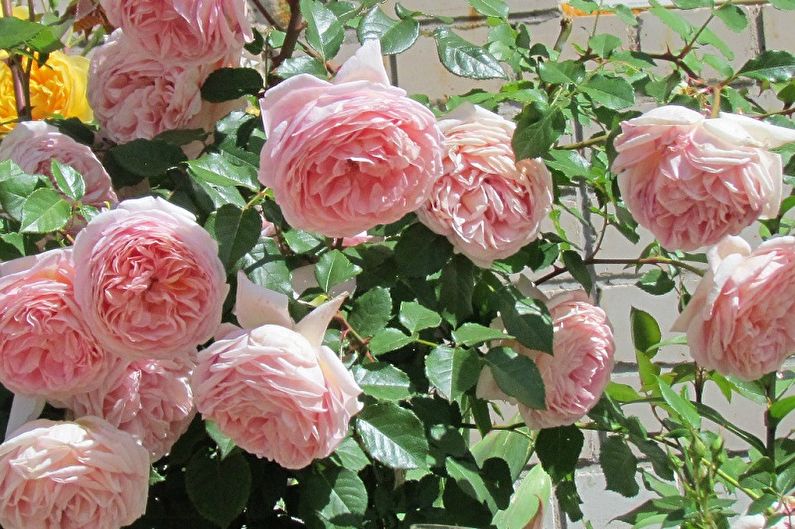
Graham Thomas
The bushes of this rose are very tall. They have shoots that can reach three meters in hot climates, and one and a half meters in cooler climates.
Graham Thomas is often used in landscape design as a trellis, wrapping fences and arches in colorful dresses. Another interesting fact is the change in the color of buds with age. In youth, they are orange, and then become sunny yellow.
Their sizes are also quite impressive and reach 10 cm. During the flowering of the rose, a fragrance with subtle notes of tea is distinctly felt. The first opening of the buds can be observed in the summer, and at the end of the season there are several less abundant flowering waves.
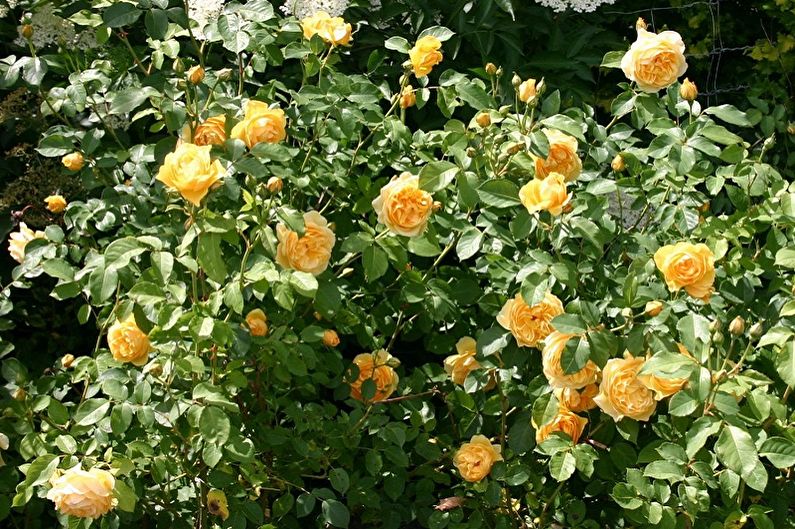
Proper care of the English rose
Like any flowering plant, the English rose needs to create suitable living conditions. She does not belong to capricious cultures, and following some simple rules will be enough to admire her beautiful long flowering.
Lighting
Given the fact that the English rose hails from Misty Albion, it does not need bright lighting. For its landing, darkened areas are chosen, since the presence of the sun 4-5 hours a day is quite enough for the plant. However, growing in a very darkened area, the bush may begin to stretch, which will violate its decorative effect.

Temperature
The flower has no special requirements for the temperature regime and feels comfortable in a temperate climate. An English rose is able to withstand winter frosts down to –20 ° C, but it is still better to arrange shelter for it, for example, from a spruce branch or a plywood box.
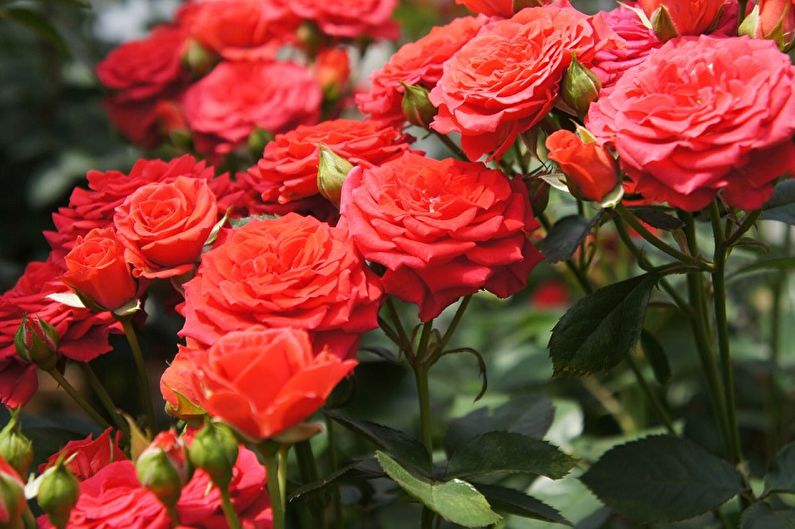
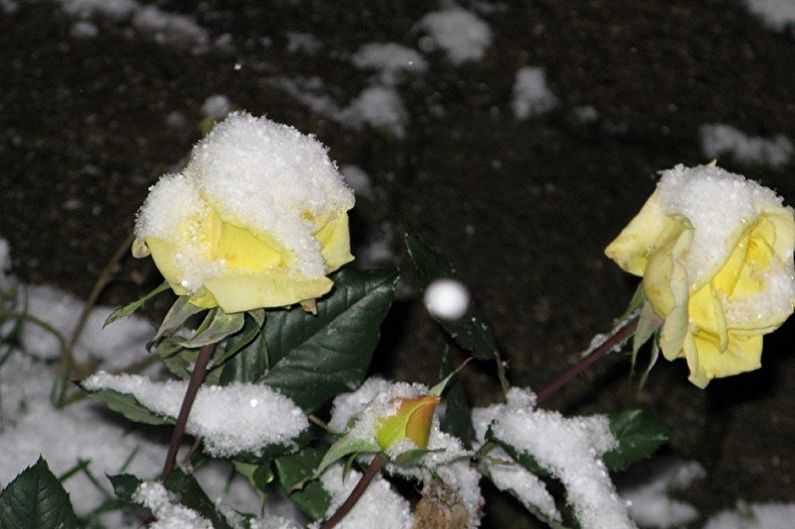
Humidity
The English rose loves moderate humidity. In the summertime, in addition to watering, she will not be prevented from showering - spraying with settled water. However, excessively damp weather often leads to drying of the upper petals of the bud, as a result of which the flower cannot open, and it will have to be helped. Another important care item is brushing off the bush after rain. This is done so that the stagnation of water does not form in the buds, which leads to the formation of gray mold.
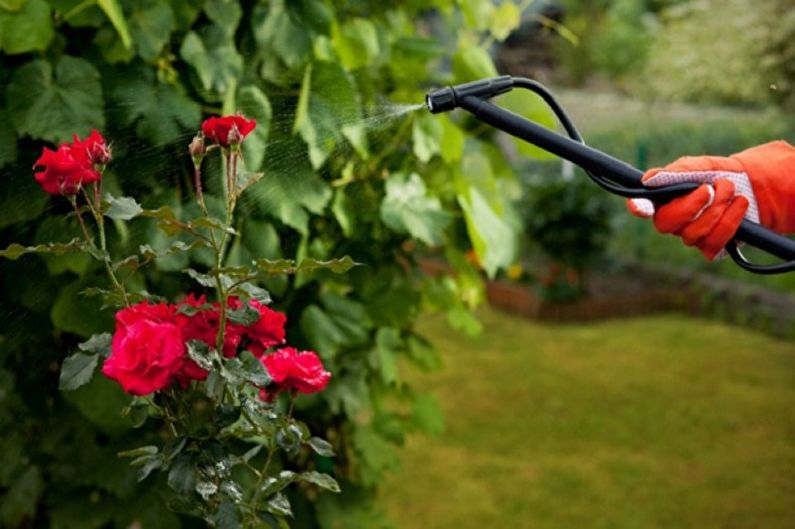
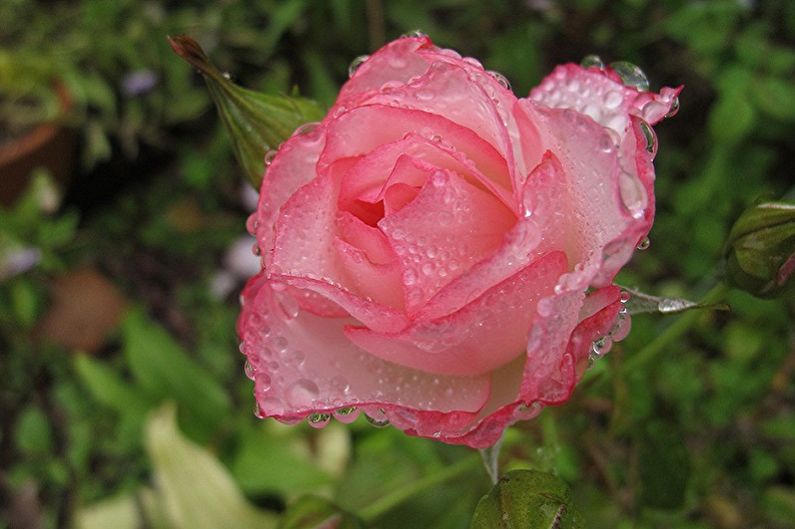
Watering
English rose is watered as necessary, observing the drying of the topsoil. For irrigation use warm, settled water, which can be prepared in advance. For one adult bush, one-time watering should be at least 8 liters, and for climbing varieties - 15 liters.
It is important that the water does not fall on the flowers and leaves - water is supplied to the base of the bush. The older the rose, the wider its roots grow and, accordingly, the larger the area of the watering place. Drinking a flower is provided in the evening twice a week (in hot summer you can water more often).
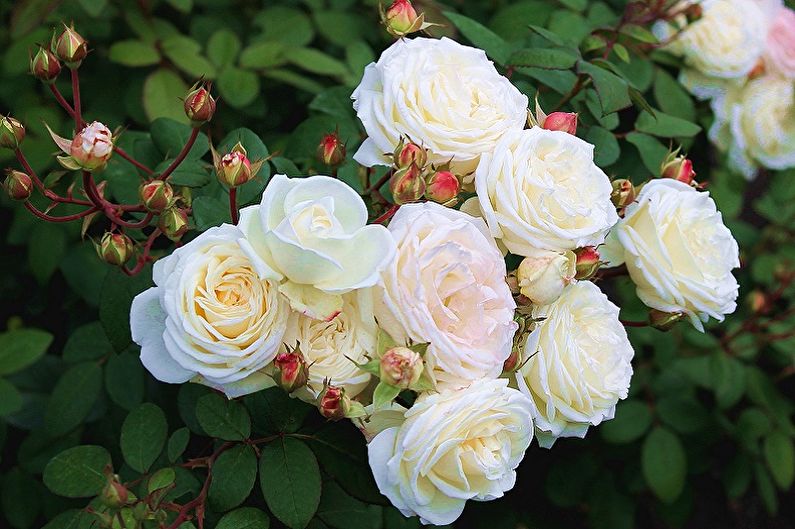
Fertilizers and fertilizing
One of the most important details of the life cycle of the English rose is the application of fertilizing, which will provide it with good health and lush flowering. Fertilizers also help plant winter frosts. Top dressing is introduced during budding and flowering. When the buds have not yet opened, the English rose is fed with nitrogen fertilizers, and the flowering bush requires phosphorus and potassium supplements. It is worth noting that potassium compounds very well help the rose to survive wintering, so they must be applied regularly.
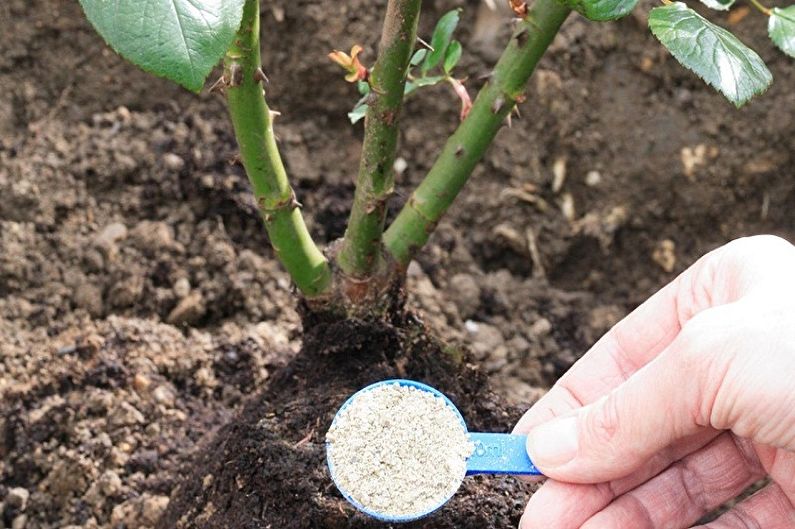
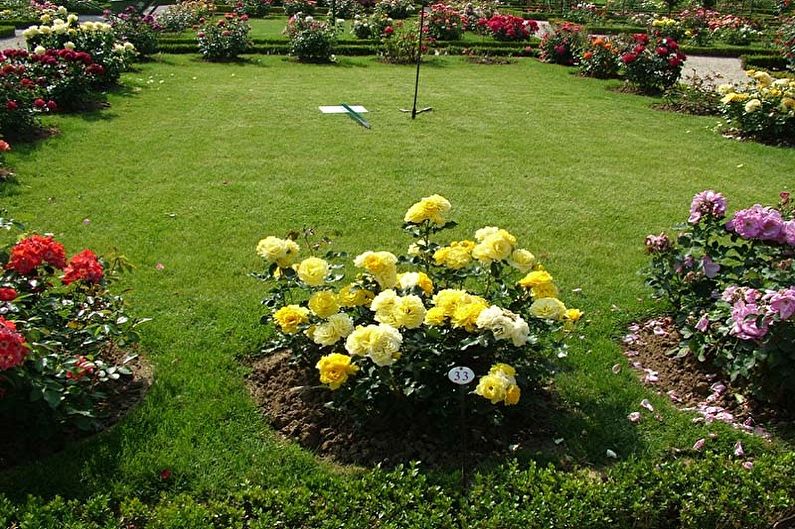
Pests and diseases of the English rose
For the English rose, it is very important to observe the basic rules of care. Factors such as waterlogging, insufficient lighting, etc., often lead to a deterioration in its condition. In addition, fungal and viral ailments such as black spotting, powdery mildew, gray rot, and rust can overcome a flower.
The disease is determined by the appearance of spots and dots on the bushes, white plaque, twisting of foliage. Also, a spider mite that feeds on the juice of its leaves can do considerable harm to the English rose. Its presence is characterized by a coating on the lower plates of leaves, a light web.
Bordeaux liquid, which needs to be sprayed with a bush every 5-6 days, effectively helps to cope with diseases and pests. As a preventive measure, you can pollinate the plant twice a season with wood ash and sprinkle soil on it.

How to transplant an English rose
The English rose well tolerates the change of "place of residence" if the procedure is carried out in the cool season, while observing some basic rules.
The transplant is carried out at the end of September, the best option is the evening time of the day, when the street is quite fresh.The most crucial moment of transplantation is the removal of the bush from the soil, which should be carried out as accurately as possible without damage to the root system.
The plant is dug up with a shovel from all sides, gradually increasing depth. The core root goes far deeper into the soil, so in some area it will need to be chopped off. The bush is removed from the pit with the preservation of an earthen coma and transferred to a new place.
The landing pit should be slightly larger than the rhizome. The English rose sits in such a way that the root neck is deepened in the ground, after which fresh soil is added, slightly tamped. The transplanted bush must be abundantly watered and mulched. Tall plants can be tied to form properly.
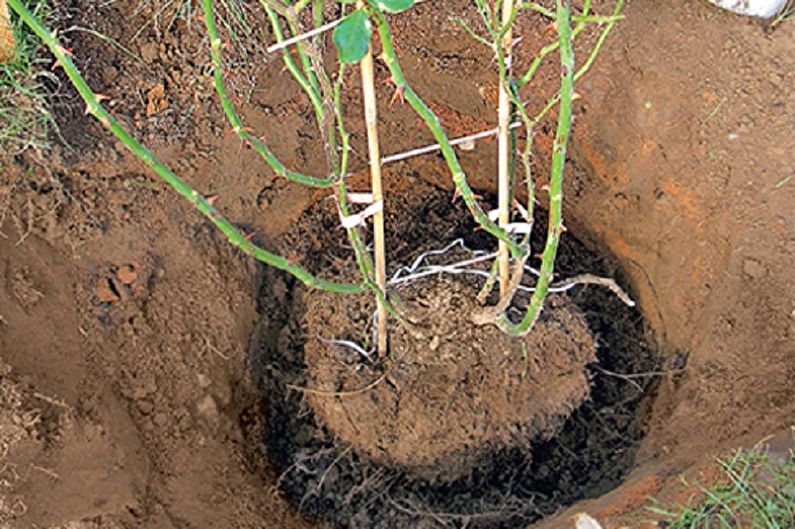
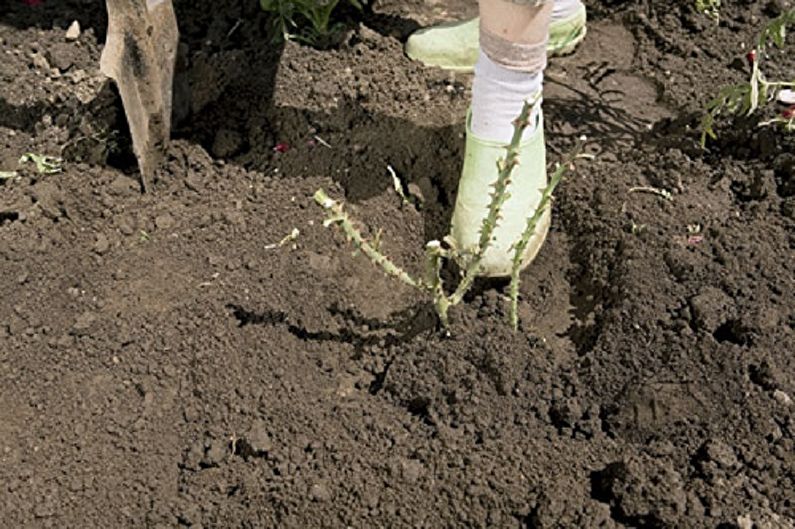
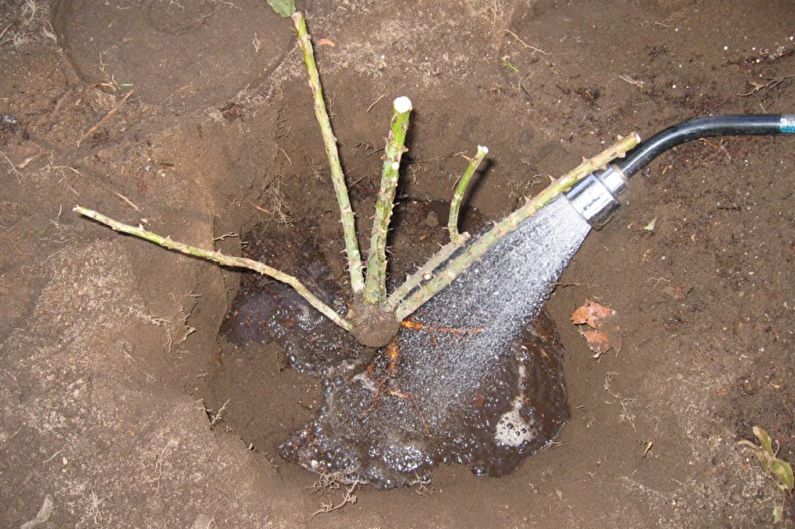
Propagation at home
To independently engage in the cultivation of the English rose, they turn to one of several methods, taking cuttings, layering, offspring, or the method of grafting for raw materials. The latter method is used more often by gardeners, as it is considered more effective.
Propagation of an English rose by vaccination
In breeding an English rose by the vaccination method, its buds are most often used. To start, rootstock is grown (Rose Loxa is used), after which a rose is grafted onto it.
Reproduction in this way has the following steps:
- Planting seeds for growing stock;
- Selection of seedlings;
- Selection of shoots with buds;
- Cleaning the root neck of the stock and its T-shaped incision;
- A cut of a kidney on the shoot;
- Connection of stock to scion;
- Fixing the place of fastening with a film.
The results of this procedure will appear after a couple of weeks.

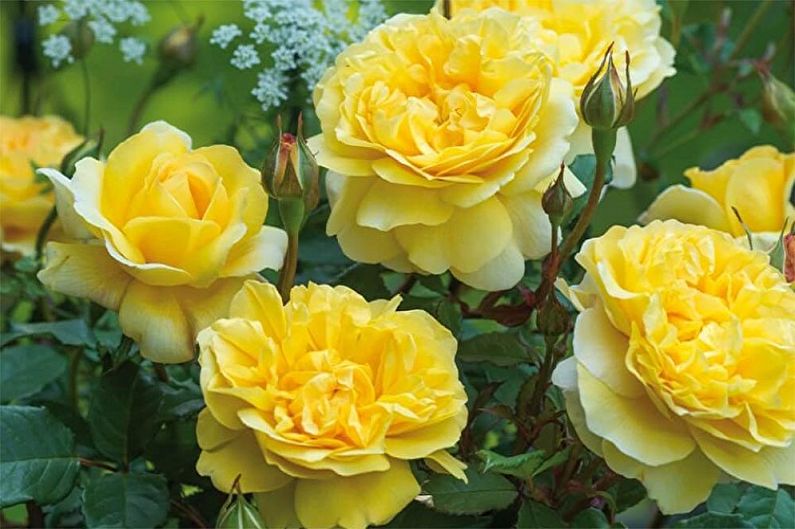
Propagation of an English rose by cuttings
In this case, it is necessary to cut cuttings from ripened shoots, up to 20 cm long, with several leaves (two of them are cut before planting, only one remains at the top). You can plant the material directly into the ground. To do this, a bed is prepared in advance, which must be weeded, and pits are excavated at a distance of 15 cm from each other. The cuttings are seated in such a way that only the top leaf remains on the surface. Each copy must be covered with a jar or a plastic bottle. For wintering, the bed is carefully covered. In the spring, the first leaves will appear, and you can dive bushes only after a year.
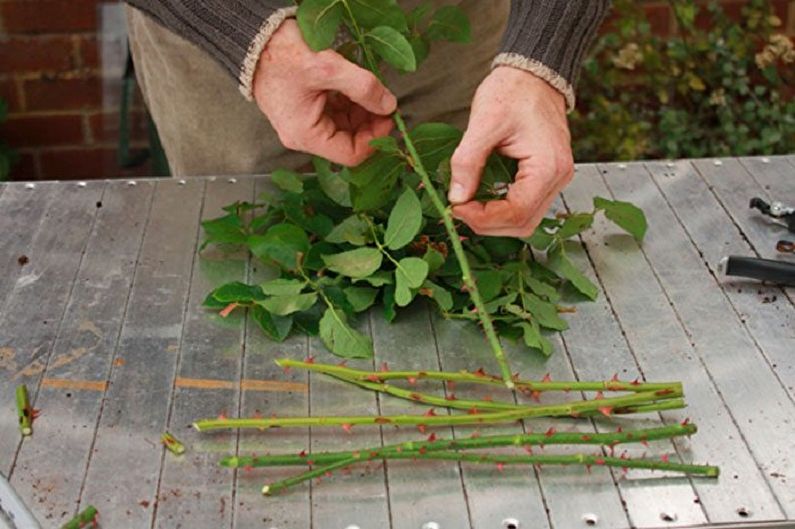
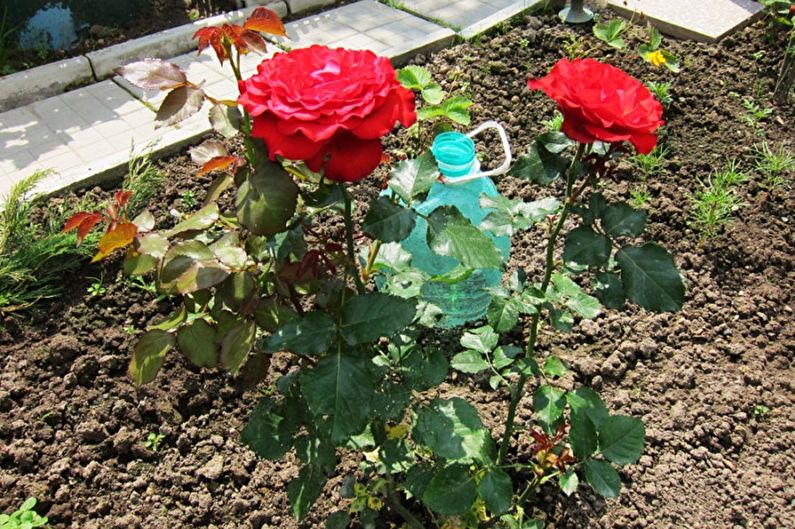
Propagation of an English rose by layering
The method is recognized as the simplest. On the lower part of the bush, it is necessary to find an elongated shoot, make an incision on it, lean it against the ground and fix it securely. In addition, laying should be sprinkled with a layer of soil so that the top is visible. Layers must be watered regularly. Disconnecting and replanting a newly made seedling is carried out in a year.
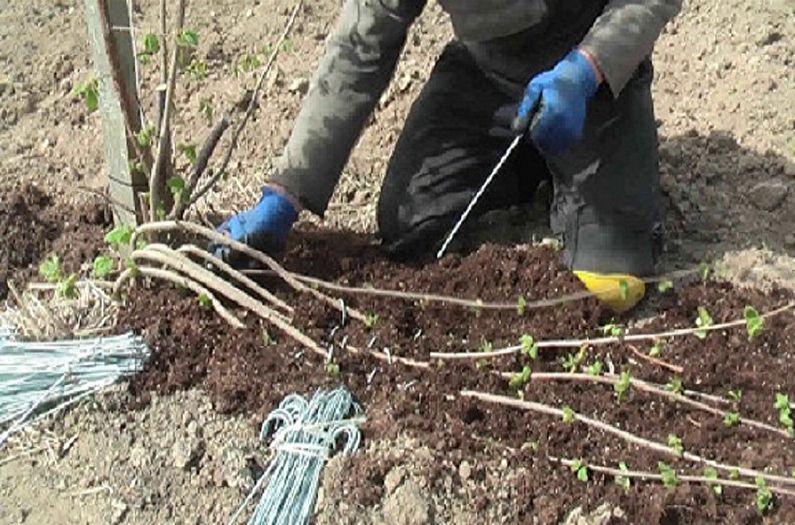
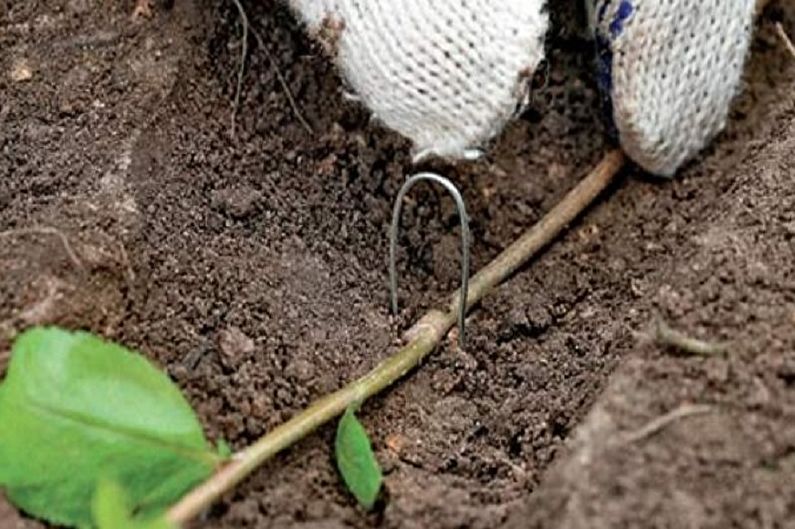
Propagation of an English rose by offspring
Root shoots (offspring) is also a good raw material for breeding English roses. During the season, it grows many times, but has a rather weak root system, so annual material is taken for breeding. It is carefully separated and transplanted. The best time for planting is the spring period, when the snow cover will melt.

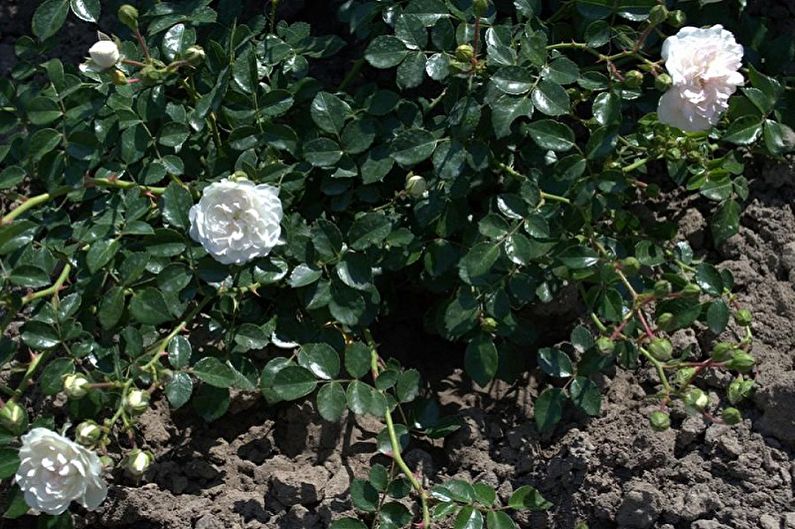
English rose - photo
Bush English rose is an ideal option for creating landscape gardening of personal territories. It serves as an excellent material for planting hedges, borders, terraces and club compositions with other flowers or plants (salvia, lavender, etc.). Its various varieties are able to decorate city streets. You can get acquainted with the variety of species of the English rose and its beautiful flowering in the pictures presented by the photo gallery. Enjoy watching!
